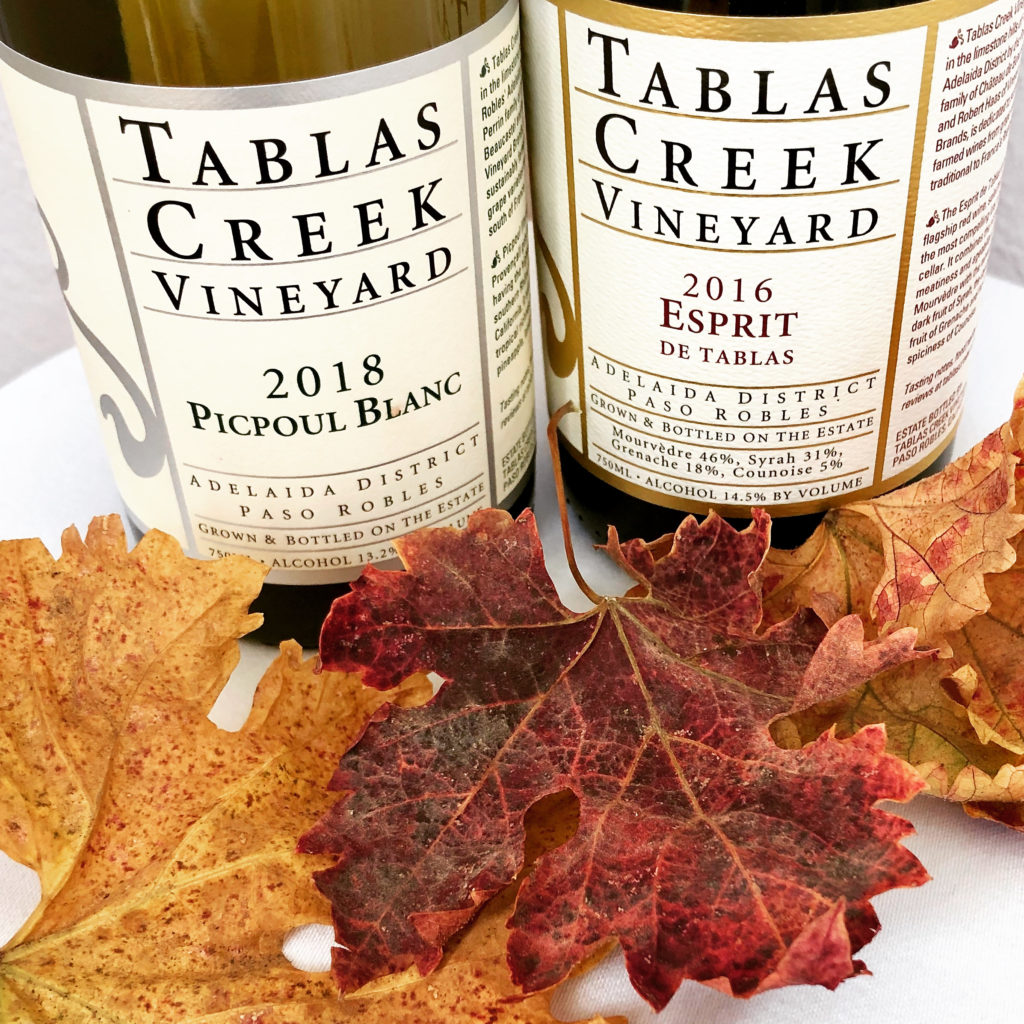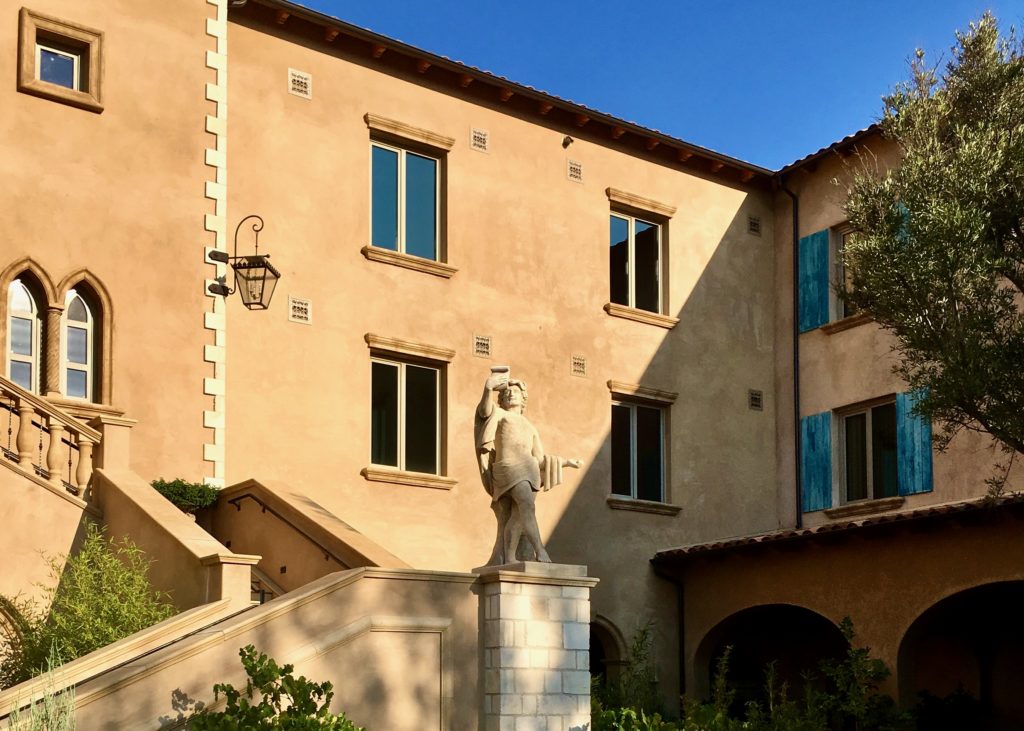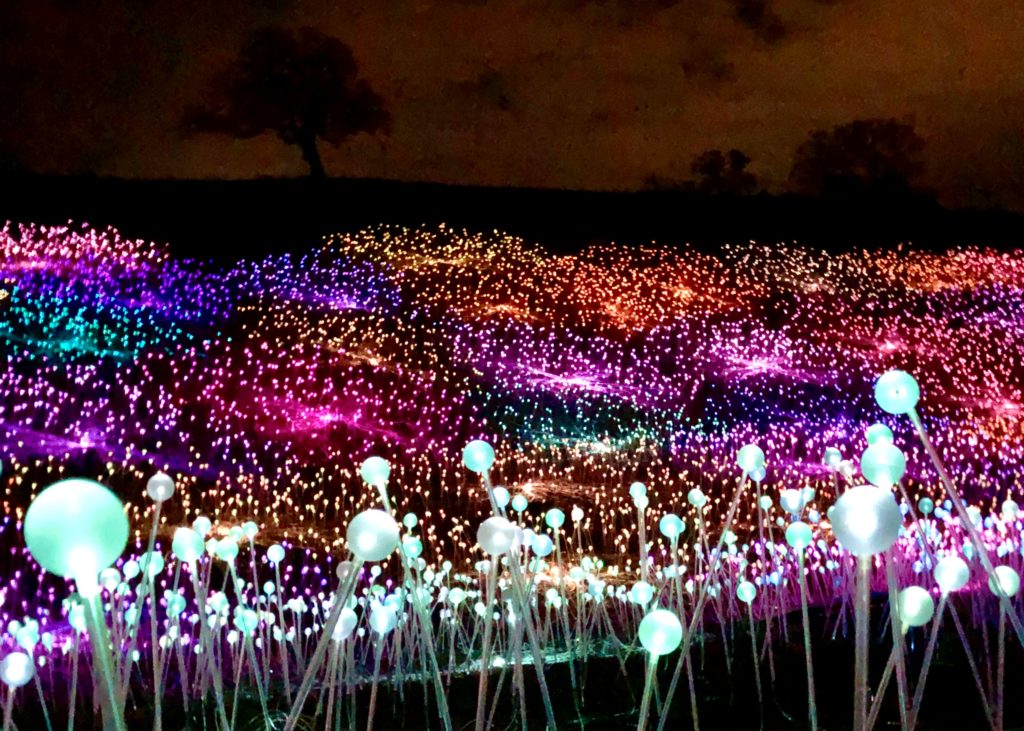There’s plenty to recommend this rising wine-world star midway between San Francisco and Los Angeles.
Paso Robles has a long history as a spa town and ranching country, but it doesn’t take more than a few minutes to figure out what’s driving the tourist economy these days: the wine industry. As recently as a quarter century ago, only a few dozen wineries operated in Paso Robles. Today there are close to 300, from pioneers like Eberle and Tablas Creek to Caliza, Jada, and other smaller producers, among them the artisan entrepreneurs of the Tin City light-industrial enclave in southern Paso Robles. Not all wineries have tasting rooms, but many do, and a boomlet in hotel construction indicates that interest in investigating them is high. According to a recent survey, most visitors come to Paso for its vineyards and wineries. Shopping and basking in the scenic beauty, climate, and fine-dining options are the other priorities.
Below are eight reasons to visit Paso Robles now.
1. Easy Access
A little over 200 miles from both the San Francisco Bay Area and Los Angeles, Paso Robles is easy to get to and around. The city is just off highway U.S. 101 – the drive takes about a 3½-hours in light traffic from either place. Once you’re here, traffic can thicken on spring, summer, and fall weekends, but conditions are nothing compared to what occurs in the metro areas north and south.

2. Critically Acclaimed Wines
But are the wines any good? In a word, yes, and in the past decade they’ve demonstrably improved. The editors of Wine Enthusiast acknowledged this development by naming Paso Robles its Wine Region of the Year in 2013. The magazine doubled down in 2016, declaring Paso Robles one of the 10 Best Wine Travel Destinations, the same year Sunset bestowed Best Wine Region in the West honors. In 2018 Trip Advisor listed Paso among 10 U.S. destinations “on the rise.”

3. Diverse Portfolio
The diversity of grape varietals pleases lovers of white, red, rosé, and dessert wines. Zinfandel figured prominently early on, but the portfolio has broadened during the past 40 years. Cabernet Sauvignon now ranks as the most planted grape, with Merlot, another Bordeaux varietal, in second place. Grenache, Syrah, and Mourvèdre also appear in many wineries’ lineups. These Rhône grapes are vinted both individually and made into “GSM” blends worth checking out. Festivals held throughout the year provide a comprehensive introduction to the range of wines produced here.

4. Nonwine Diversions
There’s more to Paso Robles than wine (and a few breweries and distilleries), of course. The Pasolivo ranch is a diverting stop in western Paso Robles for olive oil and related products. Northeast of downtown, history and military aviation buffs head to the Estrella WarBirds Museum and Woodland Auto Display to ogle restored aircraft outside on the tarmac, peruse the memorabilia inside, and as a bonus view dozens of rare cars. On the contemporary-art front is Bruce Monro’s “Field of Light at Sensorio,” a dramatic 15-acre walk-through light installation consisting of 58,000-plus stemmed fiber-optic spheres whose graceful color changes emulate the landscape. (“An earthbound aurora borealis of shifting hues,” wrote the New York Times.) Pause to relax at Allegretto Vineyard Resort Paso Robles, Spa Central Coast, and River Oaks Hot Springs Spa. At River Oaks you can soak in open-air hot tubs, some of them partially covered, others under the oaks with views of adjacent vineyards.
5. Homespun Memorabilia
There’s fun shopping and gallery hopping to be had downtown, and two pleasantly low-tech museums document area history. One of them, the Paso Robles Pioneer Museum, is a granny’s-attic assemblage of homespun memorabilia. It might be no surprise to find a spinning wheel or a century-old Maxwell automobile among the exhibits, but it’s a hoot to stumble upon oddities like the Maytag washer with a butter-making attachment. Who knew? The other museum worth a peek, inside the resolute redbrick Carnegie Historic Library, completed in 1908 in Downtown City Park, documents daily life with artifacts that include a “sawbones” kit whose contents seem more like carpenter’s tools than surgical equipment.
6. Dining and Lodging Options
Many of Paso’s best restaurants do business on or near the streets bordering Downtown City Park. A few wineries, among them Niner Wine Estates, have restaurants worth considering. See the Paso Robles Restaurants Cheat Sheet for suggestions in all price ranges.
Lodging options range from bed-and-breakfast inns and mom-and-pop motels to chain properties and a few luxury hotels. To wake up amid the vineyards, considering booking a room at a winery with an on-site inn. These include SummerWood, an outstanding choice that books up quickly between late spring and mid-fall. See the Paso Robles Lodgings Cheat Sheet for suggestions in all price ranges.

7. Year-Round Destination
Paso Robles is a year-round destination. You can hit the highlights in a weekend, but to fully explore the wineries and other sights to see, adding a day or two more is ideal.
From late spring to harvest time in early fall is high season. Things slow down in winter, and some wineries and attractions have shorter hours or are closed some days. As might be expected, lodging prices are lower in winter and late fall and early spring.
From fall to spring, the climate is generally mild. In summer it gets very hot – daytime temperatures often reach 100°F in July and August, though in the western sections close to the Pacific Ocean cooling breezes mitigate the heat. In nondrought years, the rainy season starts in November, with the heaviest precipitation usually from December through February. From May to October it rains very little. Late spring and early fall are generally pleasant.
8. Party Time
Paso Robles knows how to throw a party. Several festivals pay tribute to its vibrant wine present, but the California Mid-State Fair, the show to end all shows and a Central Coast staple since 1946, represents the region best of all. From spring to fall, here are seven popular events:
Spring
Vintage Paso: Zinfandel Weekend
This festival puts the spotlight on Zinfandel, the grape that first brought Paso Robles notice as a winegrowing region. March.
Hospice du Rhône
Paso Robles producers more than hold their own at this festival of Rhône varietals whose participating wineries come from around the world. It’s a good place to sample more than one vintage of a winery’s Viognier, Syrah, or blend. The next edition takes place in 2022. April.
Paso Robles Wine Festival
The main attraction of the city’s largest wine festival is the Grand Tasting in Downtown City Park of wines by more than 80 wineries. The area’s restaurants and caterers provide food. Other events include winemaker dinners, seminars, and exclusive reserve tastings. May.
Summer
California Mid-State Fair
Paso goes back to its agricultural roots for this two-week extravaganza that includes a parade, a pageant, horse shows, cow-dog trials, home-arts demos, a talent show, olive-oil and other tastings, mutton bustin’, and performances by major rock and country acts. July.
Fall
Pioneer Day
Business people started the Paso Robles Pioneer Day in 1931 to show appreciation to local patrons during the Depression. In keeping with that spirit the event, whose highlights include a bean feed in Downtown City Park and a parade with intriguing old farm equipment, remains free to this day. If you’re not sure what a bean feed is, check out this great Pioneer Day video with 1930s footage, or come down to the park at 7:30 am to watch the preparations (the feed’s at noon). October.
Harvest Wine Weekend
More than half of Paso Robles’s wineries participate in this festival that toasts the yearly harvest. Many wineries that don’t normally give tours often do so on this weekend. There are also winemaker dinners, seminars, and live-music events. October.
Paderewski Festival
Ignacy Jan Paderewski (1860–1941), one of the most famous pianists and composers of his era, owned two ranches in Paso Robles for nearly three decades. This festival honors his area connection with concerts, master classes, and other events. November.

Getting Here
By Air
San Luis Obispo County Regional Airport (SBP), 3 miles south of downtown San Luis Obispo and 36 miles south of Paso Robles, is the area’s main airport. Alaska, American, and United airlines serve SBP.
By Bus
Greyhound serves Paso Robles from Los Angeles, San Francisco, and other cities in California and beyond. The bus station is at 8th and Pine streets.
By Car
Paso Robles is nearly equidistant (about 210 miles) from Los Angeles and San Francisco on U.S. 101. Highway 46 heads west into Paso from California’s Central Valley and Interstate 5, and east from coastal Highway 1.
By Train
The Amtrak Coast Starlight train serves Paso Robles directly from Los Angeles and Santa Barbara. From San Francisco (twice) and Oakland (once), passengers must transfer to buses for part of the route, making traveling by train a less efficient choice. The train station is at 8th and Pine streets.
Getting Around
By Car
Driving a car is by far the most efficient way to get around Paso Robles, which spreads both east and west of U.S. 101, the main north–south roadway. When people refer to a winery or appellation as being on the east or west side, they’re referring to U.S. 101. Highway 46 splits the town east–west; many wineries are along or off Highway 46.
By Van
Breakaway Tours and The Wine Wrangler are two reliable companies that offer group and private tours to Paso Robles wineries.
What to Pack
In keeping with the area’s cowboy roots, casual attire is the norm in the Paso Robles, though it’s a good idea to upgrade to dressy casual when dining at nicer establishments. Women may find themselves more comfortable in flats or low heels, especially when going on winery or vineyard tours or standing at tasting bars. From late spring to early fall, pack a sunhat or visor, sunglasses, and sunblock. From November through April you may need an umbrella.
Paso Robles Stories and Reviews
What to Do
12 Foolproof Paso Robles Wine Tasting Experiences
Sixmilebridge Vineyards
Tablas Creek Vineyard
Tin City
Where to Eat, Drink, and Sleep
Allegretto Vineyard Resort Paso Robles
Paso Robles Lodgings Cheat Sheet
Paso Robles Restaurants Cheat Sheet
Thomas Hill Organics
More About Paso Robles
Paso Robles Wine Facts
Paso Robles CAB Collective
This story first appeared online in 2017; it was fact-checked and updated in 2021. The lead photo depicts Bruce Munro’s “Field of Light at Sensorio.”

Pingback: Allegretto Vineyard Resort Paso Robles – Daniel Mangin
Pingback: Niner Wine Estates – Daniel Mangin
Pingback: Sixmilebridge Vineyards – Daniel Mangin
Pingback: Paso Robles Pioneer Museum – Daniel Mangin
Pingback: Tablas Creek Vineyard – Daniel Mangin
Pingback: 12 Foolproof Paso Robles Wine Tasting Experiences – Daniel Mangin